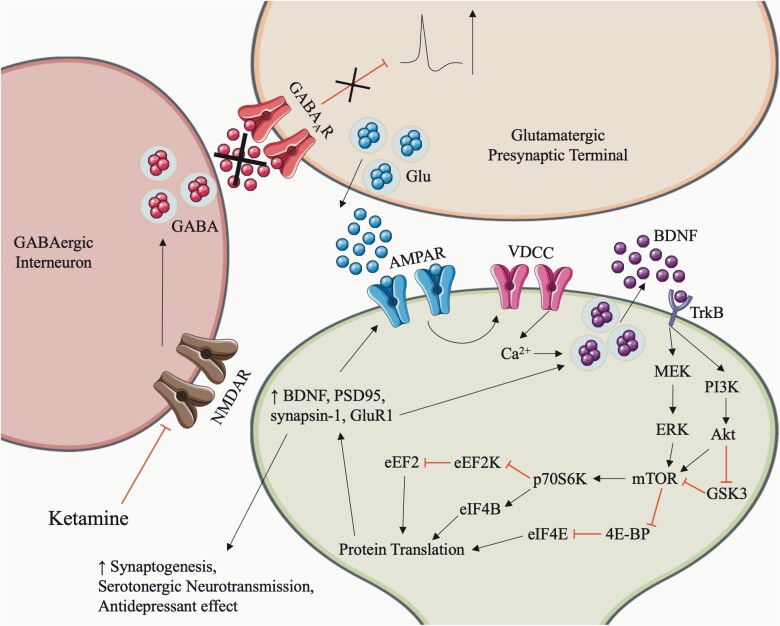Figure 1.
Ketamine mechanism of action: ketamine binds open-state NMDA receptors on GABAergic interneurons, which inhibits their firing. Silencing of the interneurons results in disinhibition of excitatory glutamatergic neurons and a burst-release of glutamate. Glutamate binds AMPA receptors on the post-synaptic membrane, leading to calcium influx through L-type voltage-gated calcium channels (VDCC). This influx causes Bdnf release into the synaptic cleft, which binds TrkB, its receptor, on the post-synaptic membrane. Bdnf binding TrkB activates the Mek and PI3K pathways in the post-synaptic neuron, which lead to Gsk3 inhibition, mTOR activation, and protein translation. Ketamine’s antidepressant effect is driven by the resulting synaptogenesis and serotonergic neurotransmission via increased translation of Bdnf, PSD-95, synapsin-1, and GluR1.

